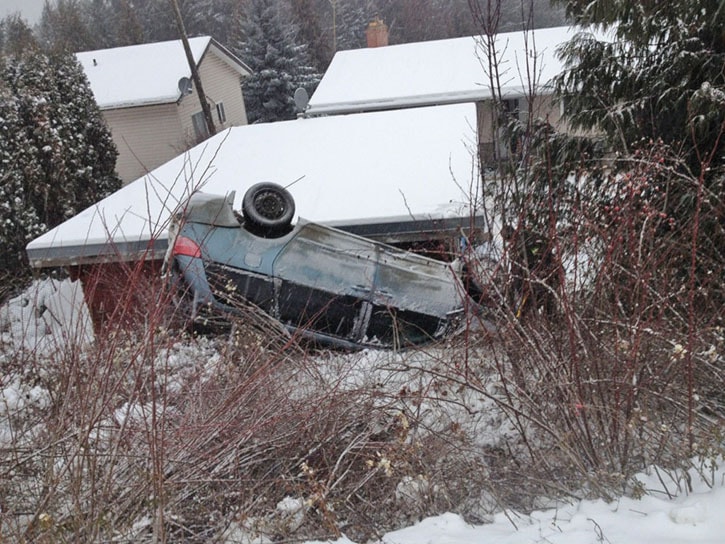Winter has hit the Shuswap, and with the colder temperatures and snow come hazardous driving conditions.
Chase RCMP have been busy over the last number of weeks, seeing well over 30 motor-vehicle incidents relating to winter driving conditions.
Sgt. Gary Heebner of the Chase RCMP detachment warns drivers to slow down and allow more time to get to their destination.
Heebner also encourages all Shuswap drivers to ensure they have proper winter tires installed on their vehicles.
“The ministry allows mud and snow tires,” Heebner said, explaining that they are not so much winter tires as an all-season type.
RCMP recommend the true winter brands, he said, noting that they should have a snow flake design on the side.
These tires need to go through much more rigourous tests and pass higher standards, Heebner said, noting mud and snow tires to do not. He also recommends the use of studs where possible, though this is a personal preference and not one enforced by the RCMP.
He said studs are useful in this area that see lots of ice.
A big problem, Heebner said, was the false confidence drivers get from the use of four-wheel and all-wheel drive.
“Many think this is the answer all the time,” he said.
The issue is, he explained, that when you lose traction on two wheels, the vehicle begins to fish-tail, but the front tires stay where they should be. This at least allows the driver a chance to gain control once again.
When in a four-wheel or all wheel drive vehicle, however, the driver loses control of all the wheels, not just two.
Heebner also stresses the importance of leaving more distance between your vehicle and those ahead of you and putting defensive driving to use.
People need to watch out for snow plows, he said, as well as pay close attention to the roads they are travelling.
He notes how plow trucks can build up ditches, and make them appear level with the highway.
Those who need to pull off in a hurry need to be aware of where the shoulder ends, and a possible ditch begins.
Plow trucks can also cause a slushy build up on the sides of the road, which can pull drivers in.
Emergency kits are important to have in the vehicles at all times, but especially during the winter months.
If a driver finds themselves stranded on the side of the highway Heebner suggests they stay in their vehicles instead of trying to walk.
Plan ahead for trips, giving plenty of time and ensure your cell phone is charged in case an emergency call is needed.
If a driver sees or suspects that an accident has taken place, they are urged to call 9-1-1 and give an accurate as possible description of what took place.
This includes the type of vehicle involved, and a description of the location, noting how many kilometres it is from a destination.
This will help police locate the vehicle in a much more timely fashion.
While the Chase detachment prefers to educate drivers about winter driving whenever possible, they will also hand out tickets. This includes for drivers who are not driving safely for the road conditions, and also for those whose vehicles are not equipped with proper winter tires.
In the end, Heebner said, it is about slowing down, giving yourself lots of time, and being aware of your surroundings.
